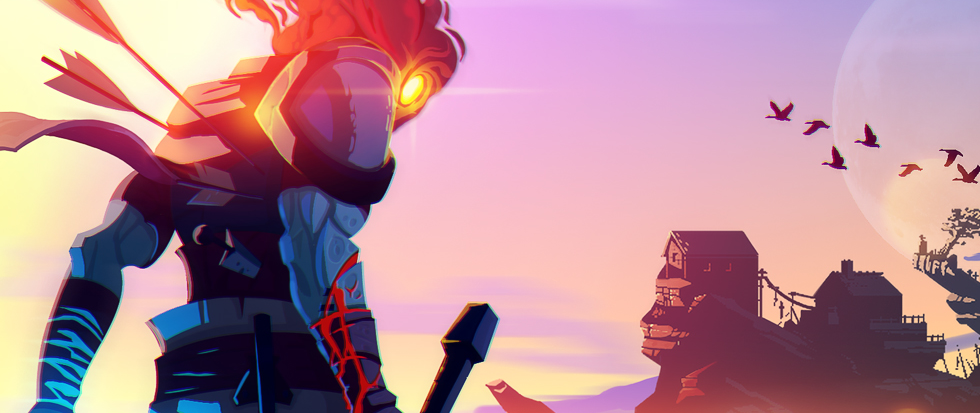
The Loop Remains the Same
Videogame physics and real physics are so dissimilar that using the same word between them feels false. But “physics” is what we got, the tango between matter and energy, and the artifice of those same ideas displayed in four pixels and polygons. There is an uncanny valley to these interactions, just as in the rendering of human faces and bodies, even within two-dimensional side-scrolling platform games, or as one of my oldest friend’s father puts it, “those bullshit jumpy-shooty games.”
What makes the dance of these parts works is a lot of theory and a lot of alchemy. What Super Mario Bros. got right so long ago can’t simply be cut and pasted over and over, every new game since requires its own tweak to the formula to settle into a singular world. And many have tried, throughout the relatively short lifespan of videogames, including one of the more recent entrants to the jumpy-shooty genre. Dead Cells has been simmering in Early Access for a while now, but Motion Twin’s multi-hyphenate/portmanteau-laden title (roguelite, metroidvania) only recently hit the official 1.0 and console release. Early access has proven to be a valuable tool for wrenching under the hood and expanding the core concepts of this game that have otherwise remained unchanged since I first dipped in. Yet the loop remains the same: Come to life, fight through limitless glowing hordes, collect power-ups and various currencies, die a bunch, gain incremental permanent enhancements, repeat. There’s plenty of branches, off-shoots, bosses, weapon combinations, and probably an ending, as well as corny jokes.
Most consistently though, I feel a persistent thread of floppiness, a slight bend of a willow’s branch to the otherwise taut action. This isn’t a total dealbreaker but something I am regularly made aware of, an endurable background buzz that still spoils some of the magic.
Writers like Tim Rogers have spoken at length about friction, the sense of contact between videogame objects and the player character, most importantly. This reading of videogame physics is the scaffolding that almost needs to be reinvented for every jumpy-shooty title. Many games have felt too floaty, too heavy, or too slippery, while many have just nailed the driving near-physical ambition of the character involved. Dead Cells exists in the atom-thin margins between all these sense of friction, leaving me with a feeling of the hand that commands a marionette, or the halcyon days of playing with action figures.
As the nameless prisoner, you’re a blob inhabiting a body, so there are layers of puppetry. For me that sensation of the invisible string comes through a jumping arc that always seems just a half-unit too low for me to grasp onto ledges, skewing my perspective of the Prisoner’s place in these hellholes. The meat of Dead Cells consists of constant melee action, and shifting left or right throughout these carries the weight of flipping a playing card over and over. The Prisoner is a loose G.I. Joe winding through a bedroom jungle by hand, a two-legged finger ninja pirouetting on the kitchen table, fun but still weightless and floppy.
I’m afraid this comes off like a kind of heavy-handed criticism, but it’s truly a borderline indefensible tic of a feeling, one which comes to me in a lot of current 2D games. I couldn’t hang with first Guacamelee and 20XX is a game I should absolutely love on premise, but these characters are paper dolls with a screwed-up gravity and lack of heft that their inspirations managed to obfuscate with panache. It brings to mind something like Mark of the Ninja, a similarly looking title (though with substantially different goals, too early for the procedural generation boom with tightly scripted static maps) that absolutely hinged on its fantasy ninja physics.
Dead Cells is closer to leaping across the valley, and I’ve played many fantastic hours. But the world is only half of the way to memorable, and too often disintegrates into a mob dispersal simulator. Between the sub-orbital shimmy and the roguelite’s inherent devolution to a never-ending slog of slaughter, I find myself drifting away exponentially fast, never to find a satisfactory denouement. I always fall to a cheap shot from off-screen or behind a bigger ogre, buried under the masses and pressed flat before succumbing to rebirth, no end in sight to this eternal rubbery torment, until I merely drift away.





